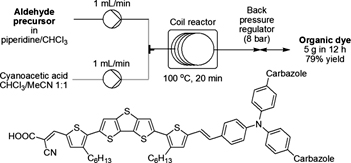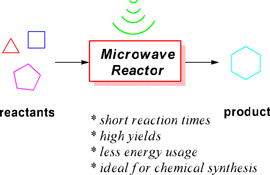
A simple energy efficient one step SDS catalysed 0.03% greener method for the synthesis of quinoxaline der using water as solvent is described
A mild and efficient synthetic method has been developed for the preparation of biologically important quinoxalines in excellent yield from relatively safe precursor α-bromoketones and 1,2-diamines using catalytic amount of micellar sodium dodecyl sulfate in water at ambient temperature. The method is also found effective for the introduction of quinoxaline moiety into the ring A of pentacyclic triterpenoid, friedelin. Ambient reaction conditions, renewable catalytic condition, inherently safer chemistry, excellent product yields, and water as a reaction medium display both economic and environmental advantages.
General procedure for quinoxalines
In a typical experimental procedure, o-phenlylenediamine (1 mmol) and α-bromoketone (1 mmol) in 1:1 molar ratios was taken in a 50 ml round bottom flask. To this water (3 ml) and 10 mg (0.03 mol%) SDS was admixed. The reaction mixture was then allowed to stir with magnetic spinning bar at room temperature. After the completion of the reaction (checked by TLC), the residue was filtered, washed with water, dried and finally recrystallized from methanol. The desired pure product was characterized by spectral (IR, 1H- and 13C-NMR) data and compared to those reported in literature.
Green Chemistry Letters and Reviews
http://www.tandfonline.com/doi/full/10.1080/17518253.2012.703245
- DOI:
- 10.1080/17518253.2012.703245
Department of Chemistry, University of North Bengal, Darjeeling, West Bengal, 734 013, India
Sodium dodecyl sulfate in water: greener approach for the synthesis of quinoxaline derivatives
Quinoxalines are ubiquitous heterocyclic units in pharmaceuticals and bioactive natural products 1–4. They are used as pharmaceuticals and antibiotics such as echinomycin, levomycin, and actinoleutin which are known to inhibit the growth of Gram-positive bacteria and are also active against various transplantable tumors 1–3. Antitumoral properties of quinoxaline compounds have also been investigated
- 1 Dell , A. ; William , D.H. ; Morris , H.R. ; Smith , G.A. Feeney , J. ; G. C.K. Roberts J. Am. Chem. Soc . 1975 , 97 , 2497 – 2502 . [CrossRef], [PubMed], [Web of Science ®]
- 2. Sato , S. ; Shiratori , O. ; Katagiri , K. J. Antibiot . 1967 , 20 , 270 – 272 . [PubMed], [Web of Science ®]
- 3. Bailly , C. ; Echepare , S. ; Gago , F. ; Waring , M. Anti-Cancer Drug Des . 1999 , 14 , 291 – 295 . [PubMed]
- 4. Renault , J. ; Baron , M. ; Mailliet , P. Eur. J. Med. Chem . 1981 , 16 , 545 – 548 . [Web of Science ®]





